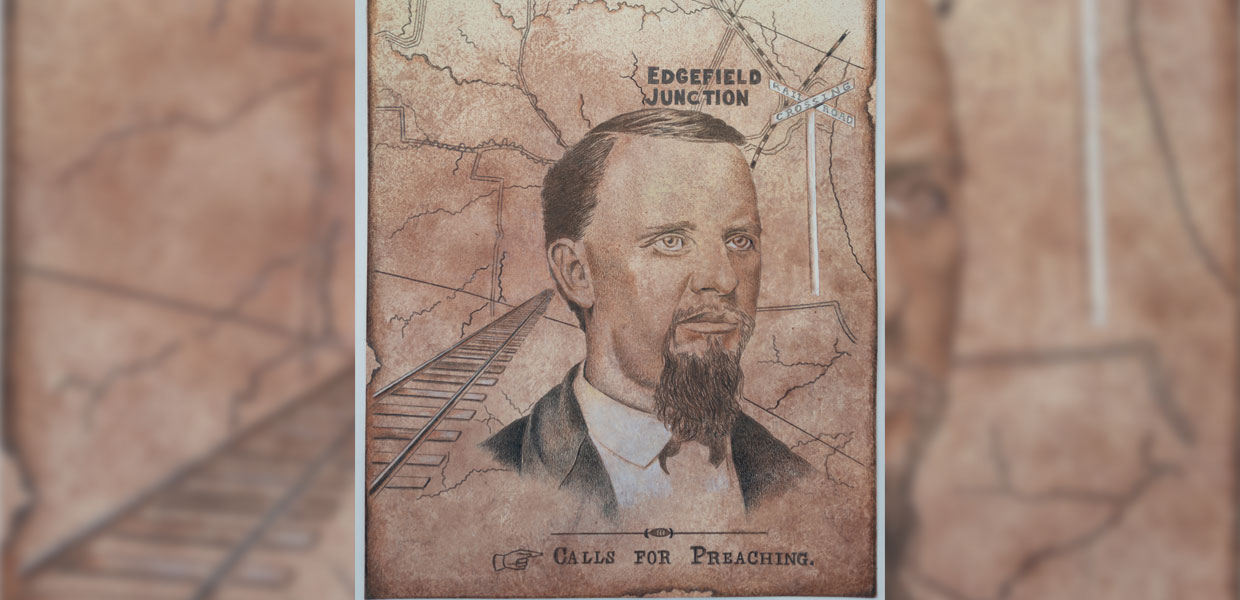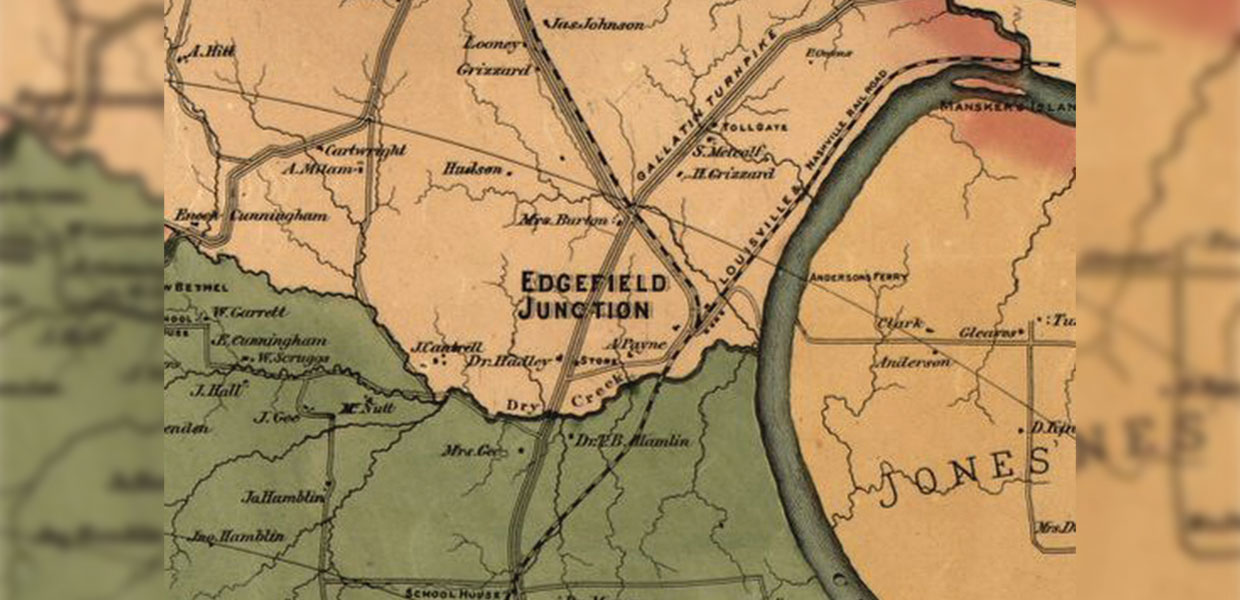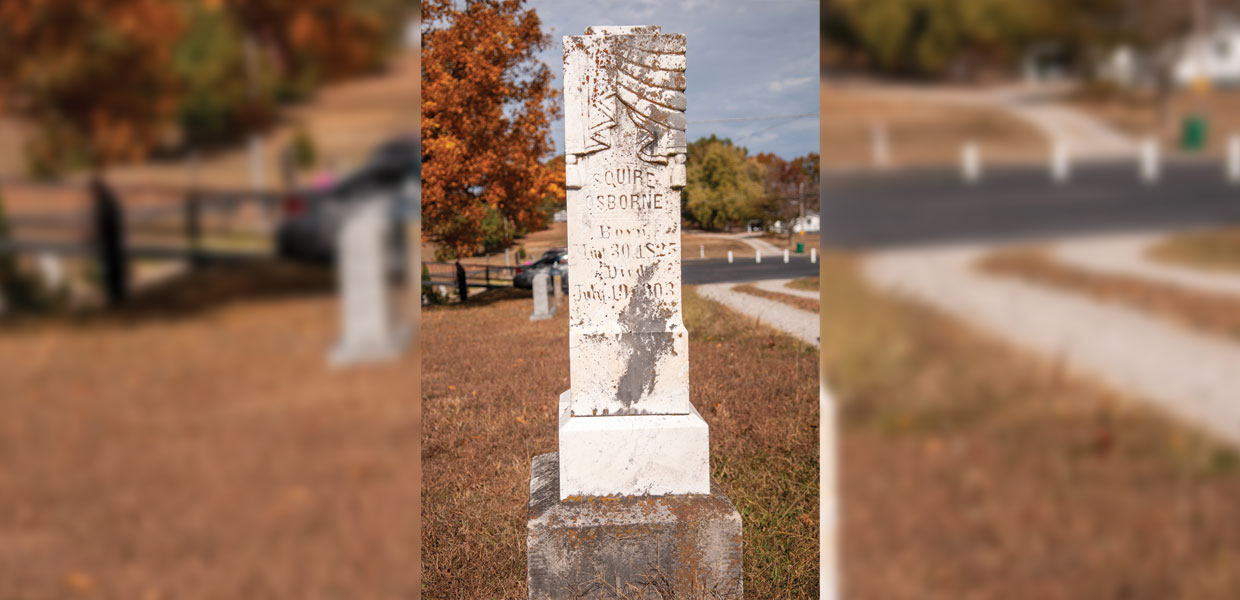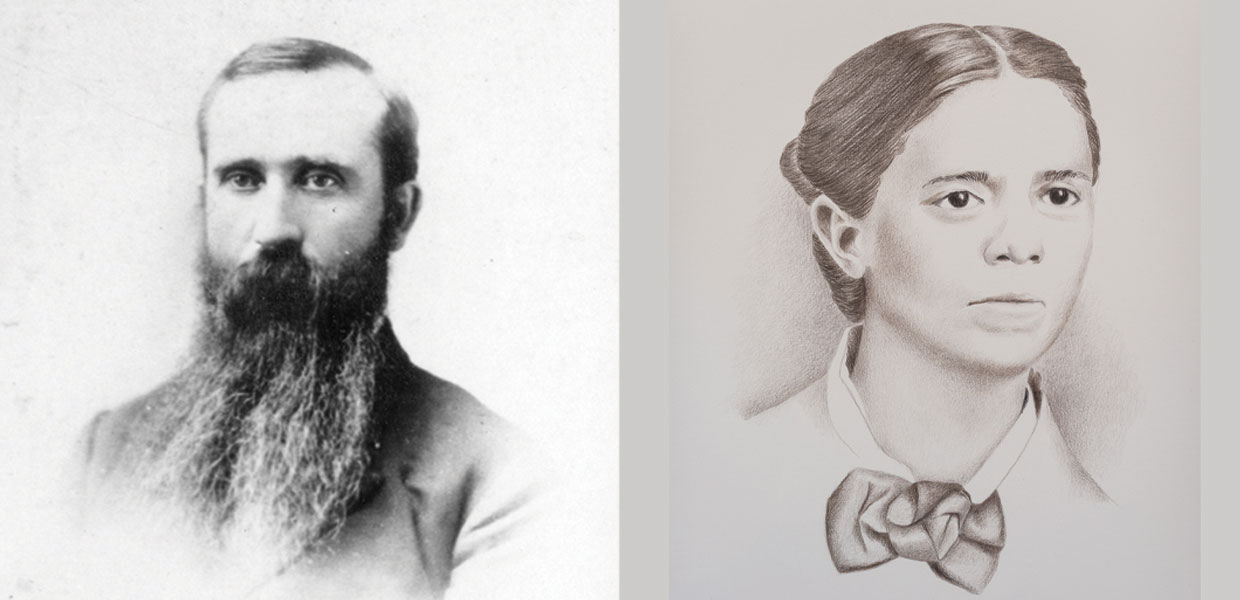



When young Elbert and Ellen married in 1865, they had no idea how one invitation would change the course of their lives and plant the seed of the Southern Union.
Elbert B. Lane, 25, and Ellen S. Esmond, 21, had met while attending the recently established State Normal School (now Eastern Michigan University) at Ypsilanti, Michigan. After Elbert completed his studies, he returned home to Bedford Township to teach. He was assigned to three schools in Bedford, Pennfield, and Emmett. After teaching for a few years, Elbert proposed and Ellen said yes. They purchased a small farm and looked forward to a life of sowing seeds and reaping bountiful harvests.
The young couple belonged to the recently organized Seventh-day Adventist denomination. Elbert had joined the Advent believers when he was 13 after a year of spiritual depression triggered by a sermon about the “eternal suffering of the ungodly. The speaker stated that if every blade of grass, every leaf upon the trees, every drop of water in the stream, all the sand upon the seashore, and every star in the sky, were numbered, and each star, each grain of sand, each leaf, and each blade represented millions of ages, and were all multiplied into each other, it would be but the beginning of that boundless age of woe.” Disheartened, Elbert decided God was a tyrant that he could not love (D. H. Lamson).
However, after a year of despair, young Elbert and his family attended meetings held by James White and his wife, Ellen, in Bedford Township. Elbert listened to Ellen White tell how God loved the world and gave his Son so anyone who believes can have eternal life. Moved by God’s love, Elbert surrendered his life to God along with stepfather Richard Godsmark, mother Huldah Lane, brother Sands, and stepbrother Otto.
Now, in spite of their happy marriage and joy in Christ, Elbert was burdened. “As he would take up the Review and Herald, his heart would be touched by the earnest appeals and pressing calls for help in the work of the ministry. He was often so burdened that he would leave his work in the field, communicate his feelings to his wife, and together they would bow down and pray to God that if this feeling was not from him it might be removed, but that if it was of God, the way might be clear for him to go forth to the harvest for the Master. With this thought in his mind, he advertised his little farm for sale; and in less than one week, the opportunity came to sell,” Advent Review and Sabbath Herald, August 23, 1881, 143.
Elbert wanted to make sure he was making a wise decision, so he sought counsel from James and Ellen White. They encouraged him to go into the ministry. So together, Elbert and Ellen went from sowing and reaping crops to sowing seeds of truth and reaping souls in the winter of 1868.
Elbert’s first assignment was to join A.O. Burrill, who shared his burden to preach the Gospel. They worked together in Vermontville and Chester, Michigan. Notwithstanding opposition, their meetings were successful. Elbert was given a ministerial license on May 19, 1869. After two years in Michigan, Lane’s ministry took him and Ellen to Indiana where they met with heartache and challenging health issues.
On July 20, 1870, they lost their child to death, but they soldiered on through grief, preaching and teaching, and, in October of 1870, Elbert was ordained at a camp meeting in Indiana. After ordination, they were working near Circlesville, Indiana, when Ellen became sick with typhoid in November. For nearly a month Elbert nursed his wife while continuing his evangelistic meetings. (Rasmussen)
During this time Elbert read an advertisement in the September 1870 Review and Herald. The headline was “Calls for Preaching.” It read, “We have received calls for preaching from the following places, which we publish for the benefit of those who may be seeking fields of labor: Nasonville, Wood Co., Wis., Grant’s Hill, Mo., Edgefield Junction, Tenn., Grass Lake, Mich., Meeme, Manitowoc Co., Wis., Akron, Tuscola Co., Mich., Plano, Ill., Delta, Eaton Co., Mich., Afton, Iowa, Memphis, Mich., Skinner, Bay Co., Mich., Ford’s Corners, Mc Lean Co., Ill.,” The Advent Review and Herald September 20, Vol. 36, p. 112.
Out of the 13 places calling for preaching, Lane felt led to go to the only one in the South — Edgefield Junction, Tennessee. This had to be a daunting decision. The Civil War had ended just five year before, and feelings between the North and South were still raw. The trip would not be easy, but Lane chose to go anyway.
After he completed evangelistic meetings in January and February of 1871, Lane traveled to Edgefield Junction, a small township located 10 miles north of Nashville, Tennessee. on the junction of two major southern railroads. He arrived in March and submitted a change of address notice to the Review and Herald so people would know where he was. “The P.O. address of E. B. Lane will be, until further notice, Edgefield Junction, Davidson Co., Tenn.,” The Advent Review and Herald of the Sabbath, April 11, 1871, p. 136.
The May 2, 1871, Advent Review carried another report:
“After a few days preparation, I came to this place, Edgefield Junction, near Nashville, Tennessee. Here are a few keeping the Sabbath who desire baptism. They embraced the truth from reading publications, having never heard a discourse from one of our ministers.
“There is but one church (Catholic) in the place, and, as the school-house was small, we accepted an invitation to occupy the station and telegraph rooms in the depot building, the white people occupying one room, and the colored the other. These, however, soon became insufficient to accommodate the people. Accordingly, the freight room was prepared, and the platform, outside also seated before all could be comfortably entertained. I have now given thirteen discourses which have brought me to the Sabbath question, which seems to be received without unusual opposition, and I look for some to embrace and keep it, with all God’s commands. I will before long give my views in another article of the South as a field of labor. Yours striving for eternal life. E. B. LANE,” The Advent Review and Herald of the Sabbath, May 2, 1871, p. 6.
In May, Elbert Lane organized a church in Edgefield Junction, composed of four white families and a Black minister, Harry Lowe. R. K. McCune submitted the following report:
“We have had a very refreshing visit from Bro. E. B. Lane, and a great reviving in our midst, considering the short stay he made with us. Seven were baptized, a little church of thirteen members organized, and some others are willing to join, but circumstances at present hinder them from so doing.
“We have organized S. B. [systematic benevolence] to the amount of thirty-three dollars, which would have been more but for the fearful work the cholera is making around us. It is said to be the most destructive malady that ever visited Nashville, and all kinds of business is sadly deranged. We beg the prayers of our people, that the destroying angel may pass us by, and God’s mercy be extended to the community at large,” “Tennessee,” R. K. McCune. Edgefield Junction, Tenn., The Advent Review and Herald of the Sabbath, July 1, 1871.
A Few Seeds Grow in a Union
Precious seeds of truth planted by Elbert B. Lane, Squier Osborne, C. O. Taylor, D. T. Bordeaux, and many others found receptive hearts throughout the,South. Soon other congregations were organized in various states, and the Kentucky and Tennessee Conference was organized in 1876. At the General Conference of 1883, C. O. Corliss gave the report for the General Southern Mission. He reported that there were 267 white Sabbath keepers and 20 colored, (Hansen, p. 33).
To strengthen the work in the South, the General Conference District #2 was formed in 1890 to provide supervision of the work. Its headquarters was in Graysville, Tennessee, with Robert M. Kilgore as the superintendent, (Yearbook 1891, pp. 48, 49). At the close of its first year, Kilgore reported that there were five ministers in the field, serving 19 churches with a total of 383 members. The total District #2 tithe was $2,921.15.
Some of the institutions within the territory were the Graysville School (1892), Oakwood Manual Training School (November 1896), the Southern Missionary Society (1898), the Review office in Atlanta, and several sanitariums.
Louis E. Hansen opened the health work in the South with a health exhibit at the Tennessee Centennial and International Exposition from May 1 to October 31, 1897.
Finally, on April 9, 1901, the Southern Union Conference was organized. At the time there were only four conferences within its territory: the Cumberland Conference (1900), Florida Conference (1893), Kentucky Conference (1879), and Tennessee River Conference (1889).
150 Years of Adventist Evangelism
2021 marks 150 years since Elbert B. Lane came south to Edgefield Junction preaching the Gospel of Jesus Christ. We will commemorate these 150 years of evangelism this year with a series of articles recounting some of the history of this Union.
But, we must celebrate not just by taking a reflective look back. 2021 is also a year where we are focused on making and maintaining connections with each other and Christ. Even though we are separated by COVID-19, we can and must stay connected to Christ and to each other.
To do this we invite you to do just three things. One, ask God to deepen your personal connection to Him through prayer and Bible study. Two, use the “one another” commands of the New Testament to build and strengthen your connection with members of your church and community [see sidebar]. Three, identity with at least one inactive member of your congregation; pray for that person and allow God to use you to strengthen their involvement in the church.
After Elbert Lane left Edgefield Junction, he and Ellen preached and gave temperance lectures in many places. Indeed, Ellen S. Edmonds Lane held a ministerial license from 1875 to 1889.
In 1881 the Lanes were both holding evangelistic campaigns in Michigan at the same time. Elbert was preaching a meeting in Camden, while Ellen was preaching in Casanovia.
During the meeting, Lane became critically ill. “He was urged quite strongly … to telegraph to his wife, but he said she was engaged in a series of meetings, and he did not wish to alarm or disturb her. Such was his abnegation of self. He finally consented to send the message, and the physician was preparing to write at his dictation, when he said, ‘Let me rest a little, and then I have something to tell you.’ These were his last words,” Review and Herald, August 23, 1881, 143. Elbert B. Lane died at 9 a.m. on Sabbath, August 6, 1881 at Ransom Center, Michigan. He was 41.
As news about Elbert B. Lane’s death spread, news of another death stunned the young denomination. James White, co-founder of the denomination, died the same day. Interestingly, both of their wives were named Ellen. After Elbert’s death Ellen Lane continued to pastor districts and run evangelistic meetings for a while, but finally committed most of her ministry to the Health and Temperance Society.
Elbert Lane heard a call for preaching and boldly came to the South to preach to eager hearers. Today, calls for preaching continue. People still want to hear the Gospel. They need someone who will share the Good News of salvation with them. Will you go?
R. Steven Norman III, is the communication director and Southern Tidings editor at the Southern Union Conference.
Southern Union | January 2021



Comments are closed.